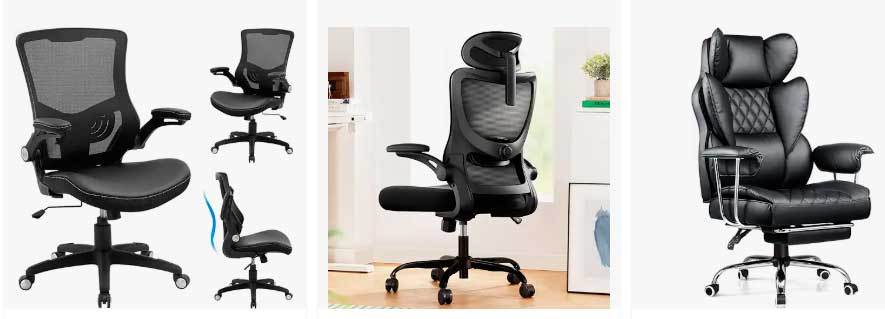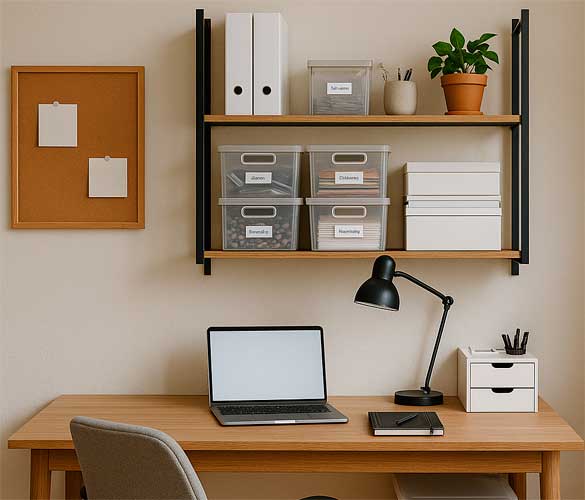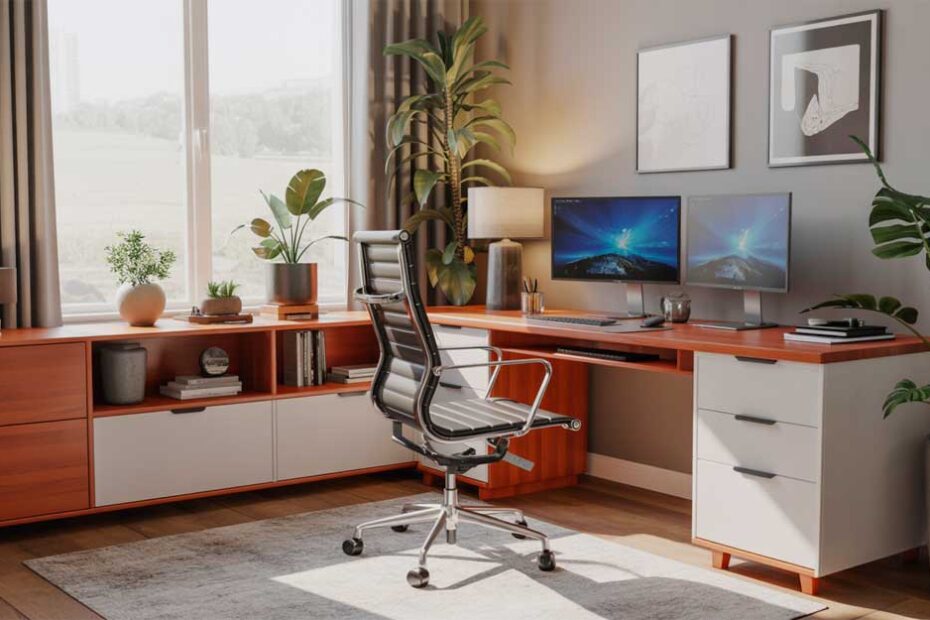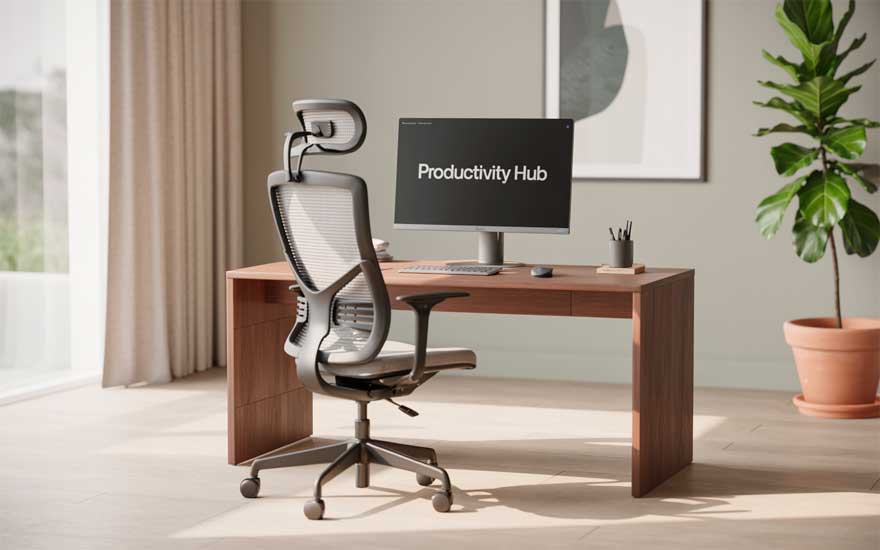In today’s fast-paced world, the rise of remote work has made creating an efficient and comfortable home office setup more essential than ever. With millions of professionals adapting to flexible schedules, managing deadlines from home, and balancing personal life with career demands, the need for a well-designed workspace has become critical. Whether you’re dealing with long video conference calls, tackling complex projects, or simply seeking a distraction-free environment, a thoughtfully planned home office can address these challenges. Exploring various Home Office Setup Ideas can help you design a space that enhances both productivity and well-being. This guide will explore the ultimate home office setup tailored for remote workers, ensuring productivity and comfort in any situation.
Choose the Right Location: Create a Dedicated Workspace
One of the first and most critical remote work essentials is choosing a dedicated area in your home. Whether it’s a spare bedroom, a sectioned-off corner, or even a walk-in closet turned workspace, separating your professional environment from personal distractions makes a huge difference in your focus and productivity.
This setup allows you to “enter work mode” mentally, even if your commute is just a few steps away. Not only does this improve mental separation between home and work, but it also enhances your ability to focus on demanding tasks like client meetings or deep research without interruptions.
In my own experience, having a defined workspace made it significantly easier to handle long conference calls and switch between personal and work duties without losing rhythm.
Invest in Ergonomic Office Furniture: Comfort Meets Functionality

Today’s Best Deals: View at Amazon.com
View at Amazon.co.uk
When talking about productivity, ergonomic office furniture is non-negotiable. An adjustable office chair that supports your spine, a height-appropriate desk, and accessories like footrests or wrist supports can drastically improve your posture, energy, and comfort.
I learned this the hard way during my first few months of working remotely. After hours of sitting in a dining chair, my back started to ache constantly. Once I upgraded to an ergonomic chair with lumbar support and adjusted my monitor height to eye level, my focus improved immediately.
Popular ergonomic upgrades include:
- Sit-stand desks
- Ergonomic keyboards and mouse
- Memory foam cushions
- Monitor risers or adjustable arms
Your home office setup isn’t complete without putting your comfort first.
Master Home Office Organization: Keep it Clean and Efficient

A cluttered space equals a cluttered mind. Home office organization goes beyond simply tidying up; it’s about creating systems that work for you. Use storage bins, vertical shelving, cable organizers, and drawer dividers to maintain order.
In my home office, I use clear stackable boxes for office supplies, and I label everything. It might sound over-the-top, but when you’re juggling multiple projects, knowing exactly where your tools are saves minutes—eventually hours—every week.
Also consider digital organization: keep your files and folders in sync with cloud tools to avoid wasting time searching through your desktop.
Office Lighting Solutions: Light the Path to Productivity
Natural light boosts mood and focus, but what if your setup isn’t near a window? That’s where office lighting solutions come into play.
Ambient lighting reduces eye strain, while task lighting focuses on your work surface. My go-to solution was installing a daylight LED lamp with adjustable warmth levels. I noticed fewer headaches and better energy throughout the afternoon slump.
Recommendations:
- Adjustable desk lamp with dimming
- Overhead lighting with daylight bulbs
- LED strip lights for mood and aesthetics
The right lighting is both a productivity tool and an energy booster.
Equip with the Right Productivity Tools and Technology
You can’t ignore tech when discussing home office setup ideas. Tools like noise-canceling headphones, dual monitors, or mechanical keyboards do more than just look cool—they drastically improve efficiency.
Some productivity tools I rely on daily:
- Notion for planning
- Slack for team communication
- Trello or Asana for task management
- A webcam with ring light for video clarity
- High-speed mesh Wi-Fi
Equally important is keeping your gear up to date. Outdated tech slows down your workflow and adds frustration to your day. Prioritize home office technology that supports your work style.
Affordable Office Equipment: Smart Budget, Big Impact
You don’t need to spend a fortune to build a great home office setup. Many affordable office equipment options provide professional-level quality without draining your wallet.
Tips for smart spending:
- Search for refurbished gear
- Buy used ergonomic chairs on trusted marketplaces
- DIY your monitor riser with stacked books or Ikea hacks
- Reuse furniture pieces creatively
When I started, I used a dining table, stacked shoe boxes as a laptop riser, and my bedroom lamp. Over time, I slowly upgraded. Don’t wait for the perfect setup—start with what you have and build as you go.
Work-from-Home Tips to Maximize Focus and Motivation
Even the best office can’t help if your routine is a mess. A few work-from-home tips that changed my game:
- Create a morning routine that mimics a commute
- Use time-blocking for deep work sessions
- Schedule regular breaks with a timer
- Set clear start and end times to avoid burnout
One of my favorite strategies is to “close down” the office at the end of the day—turn off the light, close the laptop, and walk away. It’s a simple cue that work is done.
Add Personal Touches with Home Office Decor
Let’s face it: if your workspace looks inspiring, you’ll want to spend time there. Use home office decor to make the space yours.
Think framed art, indoor plants, a colorful rug, or a mood board with your goals. My desk has a couple of motivational prints, a bonsai tree, and a soft lamp with a warm glow. It makes even a hectic Monday feel manageable.
Be cautious though—too much visual noise can distract. The key is finding balance between comfort and professionalism.
Optimize Your Virtual Workspace Design
Your remote setup extends beyond physical boundaries. Virtual workspace design means setting up your desktop, file organization, software, and cloud tools to streamline your workflow.
I use the same folder structure across Google Drive and my hard drive, and apps like Alfred (for Mac) or PowerToys (for Windows) help automate repetitive tasks. Clean virtual design = clear thinking.
Also, make sure your virtual presence (camera angle, mic quality, background) is client-ready at all times.
Final Thoughts: Build It to Work for You
Your ideal home office setup should reflect your working style, needs, and personality. There’s no one-size-fits-all formula. What matters is that the space supports your tasks, keeps you comfortable, and boosts your mental focus.
By aligning your environment with your professional goals—using the right home office setup ideas, furniture, lighting, tech, and personalization—you can transform your daily routine from chaotic to empowered.

